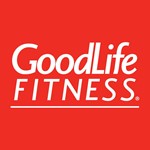Stretching is one of those things that people tend to skip. After all, torching those calories comes from the workout routine – right?
Yes, but at the same time, stretching is a crucial part of your workout, both before and after. It’s what keeps your muscles strong and flexible after a gym session. Stretching also helps decrease your risk of future injuries by increasing your range of motion.
Before you get started, understand the differences between the two kinds of stretching: dynamic and static.
Dynamic stretching
This is the type of stretching you do before a workout, and is sometimes referred to as a dynamic warm-up. Before you start curling dumbbells or running on the treadmill, your muscles are cold and can get pulled the wrong way if you try to hold a long stretch before the body has had a chance to move.
It’s called “dynamic” for a reason – it’s a warm-up where you are constantly moving at a low level and pace, gradually building yourself up to begin your workout. This can include things like knee raises, alternating side lunges or shoulder rotations.
Static stretching
This is where the cool-down comes in. Static stretching is where you hold a stationary position meant to gently extend the muscle. You shouldn’t stretch to a point where it’s painful, but at least to a point where you can feel it in your muscle.
Static stretching can either be done in sets or in one set where each move is held for longer. The main point is to stretch within your range of motion and then build up gradually.
Now that you have an idea of the different kinds of stretching, try adding the following two routines to enhance your workout results.
Before your workout
Plank
This might not sound like a warm up stretch, but it’s a great way to fire up the core and stabilize the body before you begin your workout.
Propping yourself up with your forearms, extend the body out lengthwise, keeping your butt low and back straight.
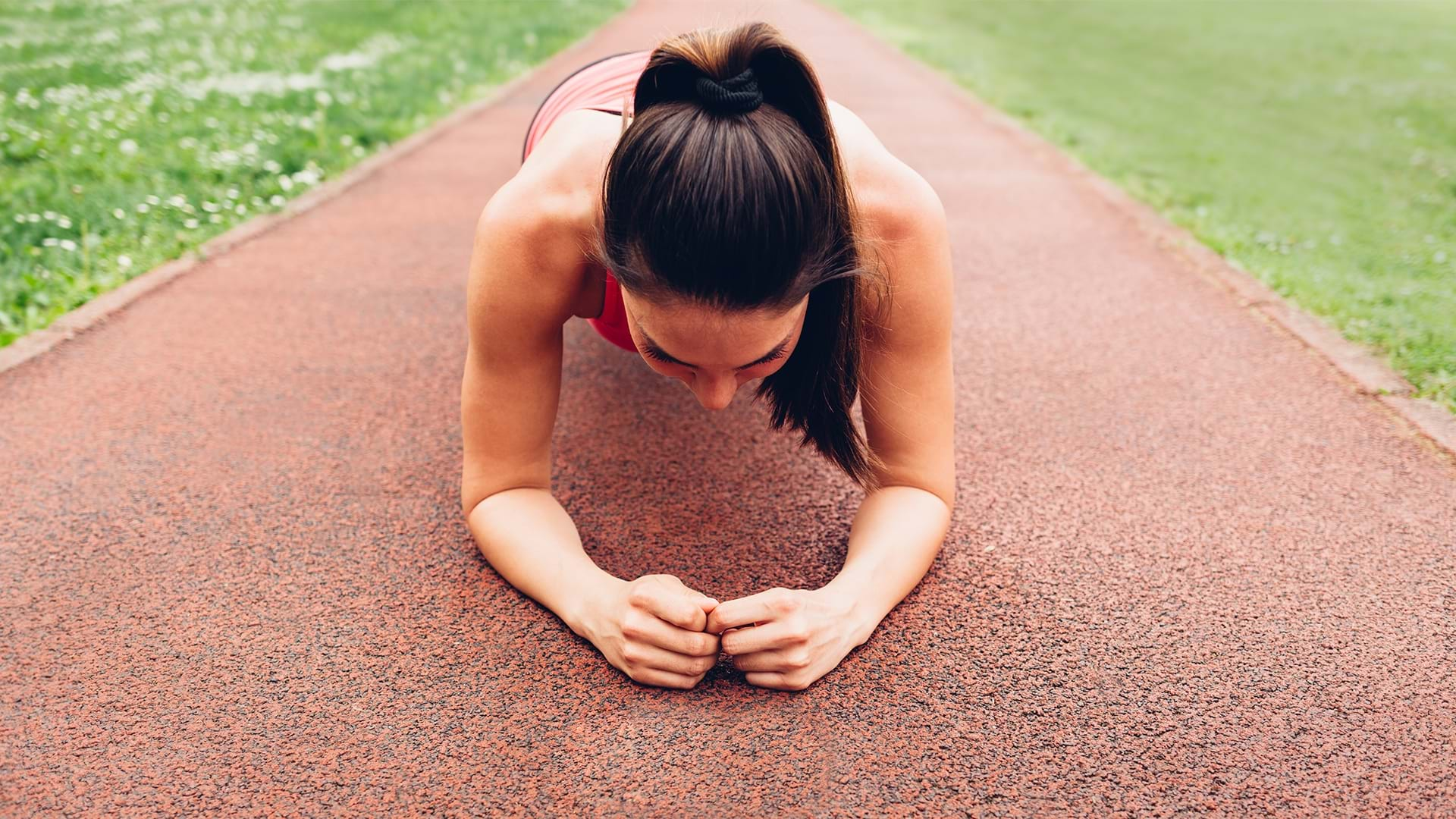
Alternating knee grabs
Standing with feet hip distance apart, begin a slow march, engaging your lower abs as you lift each knee up to your torso. Hold for a few seconds before switching sides.
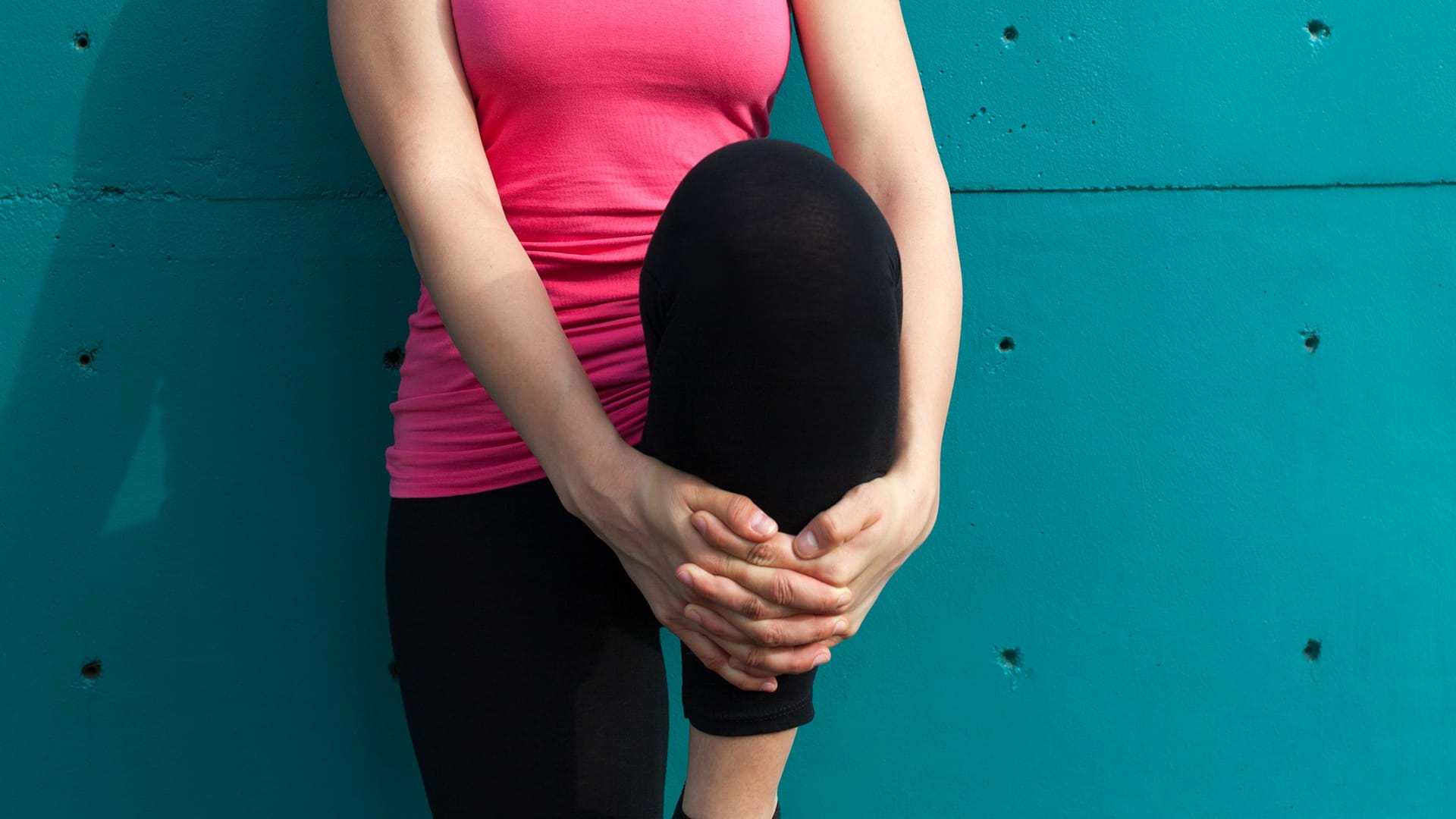
Alternating side lunge
Standing with feet wide, hinge your hips back as you lunge to one side. Be sure your bent knee doesn’t extend past your ankle. Hold for a moment before switching sides. To further engage your obliques, alternate reaching to your foot as you switch side to side.
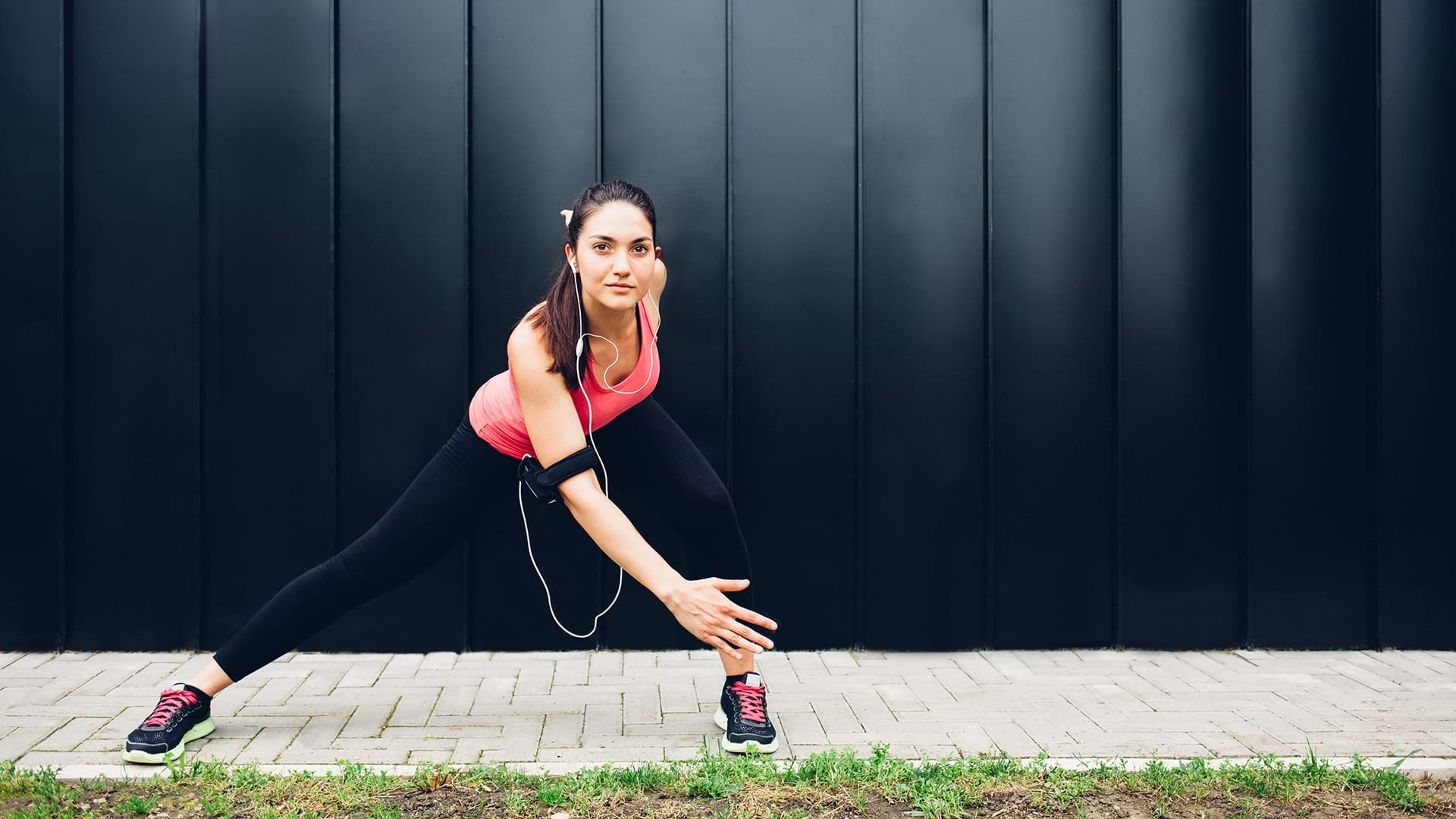
Walking lunges
Standing with feet together, take a step forward until your knee is bent at 90-degrees. Follow through with your other foot, lunging on the opposite side. Complete a few laps back and forth, alternating sides. Keep your back leg straighter for a deeper stretch in your hip flexor.
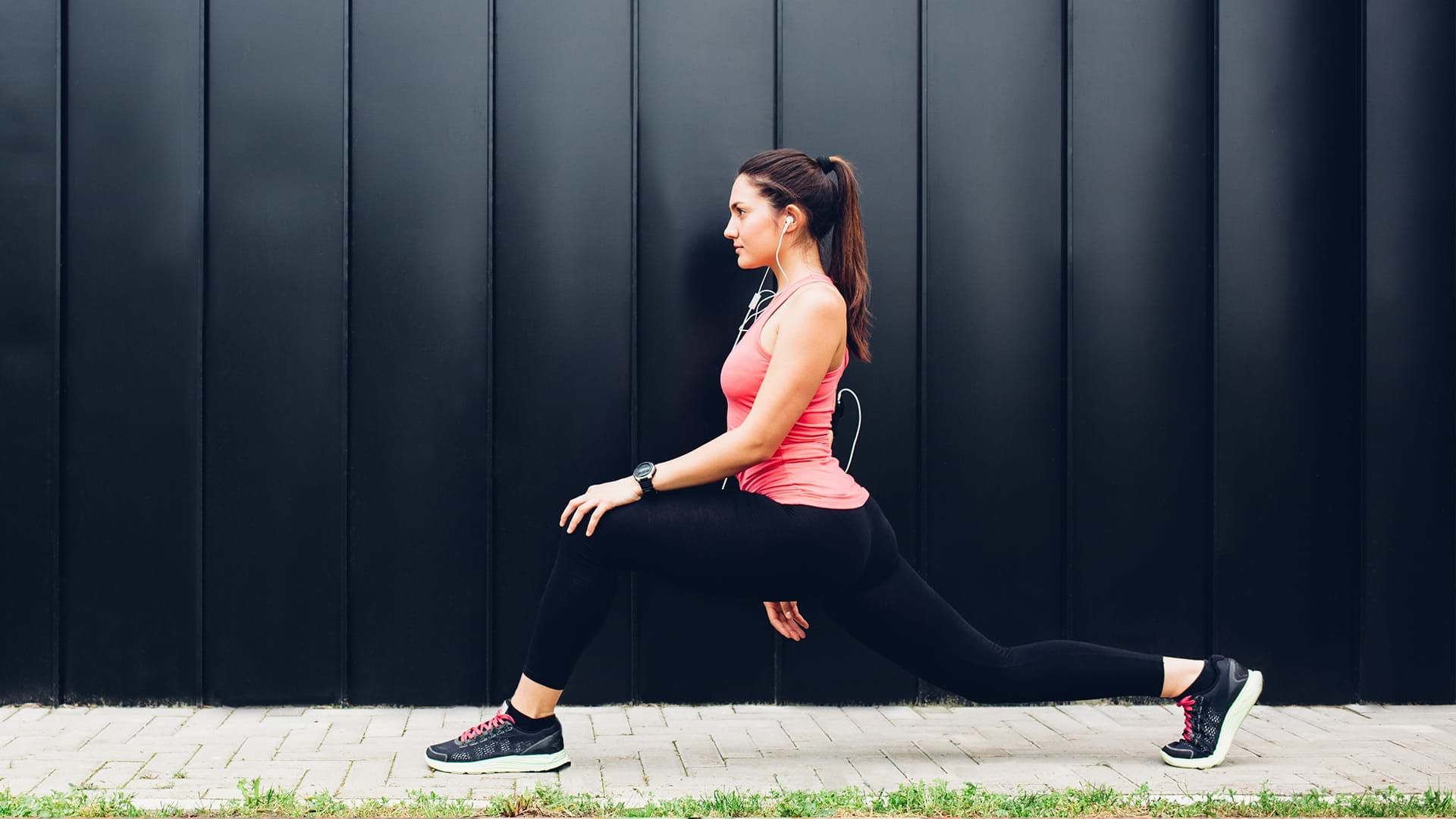
After your workout
Bent over hamstring stretch
Standing with feet together, bend forward reaching for the toes. If you can’t reach your toes, feel free to grab your shins or ankles depending on your range of motion.
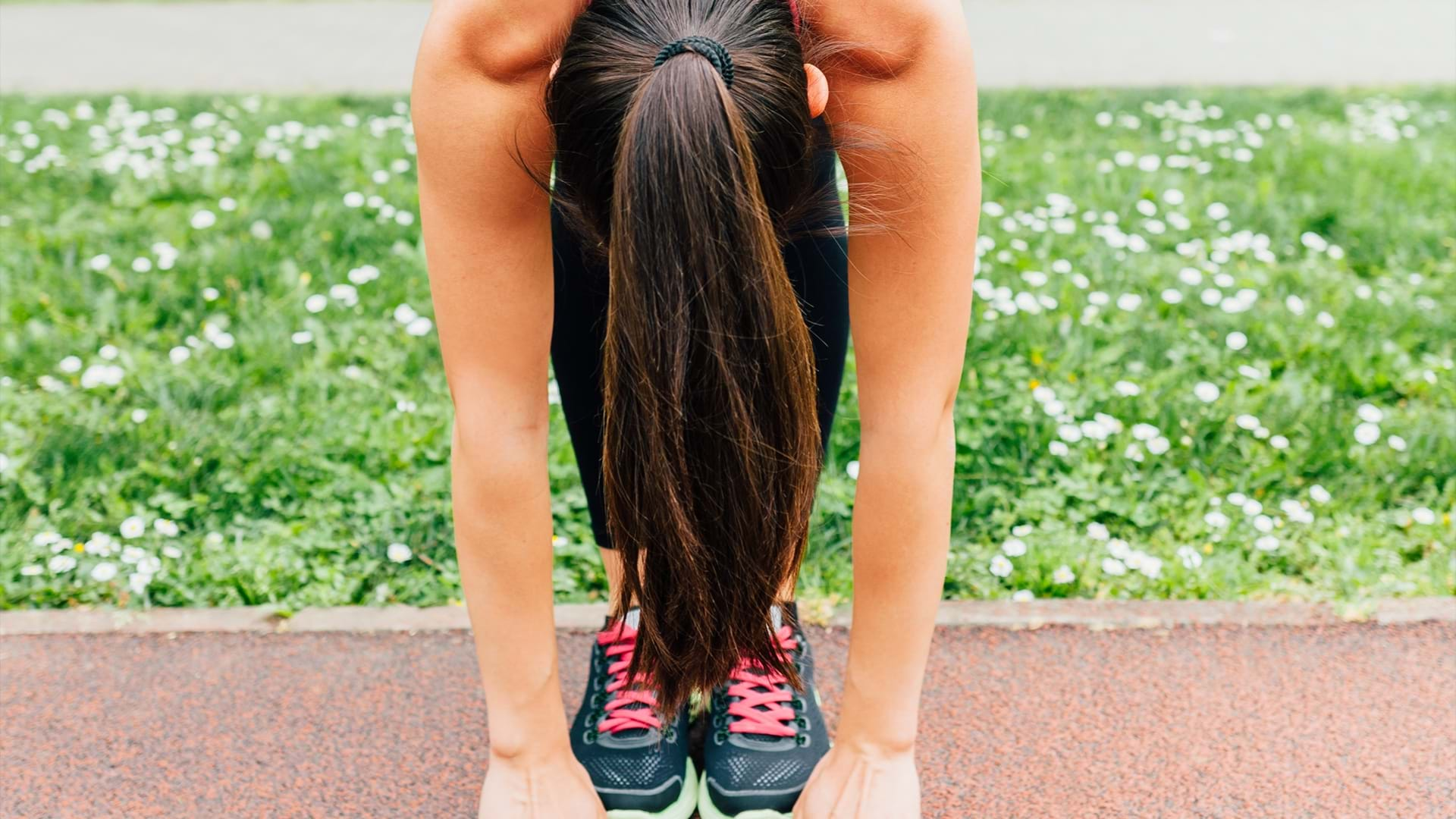
Quad stretch
Bend one leg behind you, grabbing your ankle and holding. Make sure to keep your hips facing forward as you feel the pull in your quad.
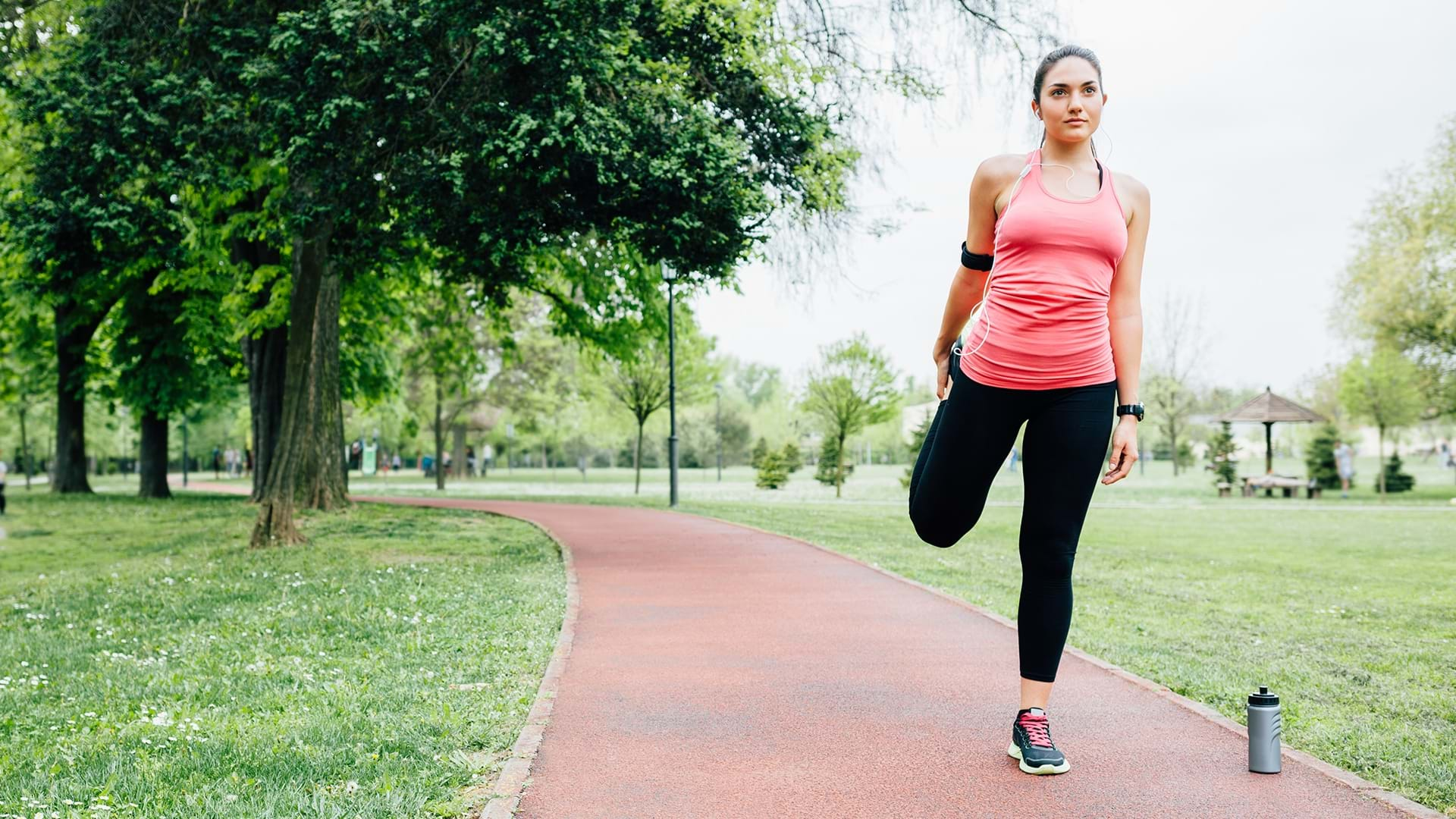
Side opener
Extend your arms overhead. Grab one wrist and lean to the side. Hold before repeating with your other arm.
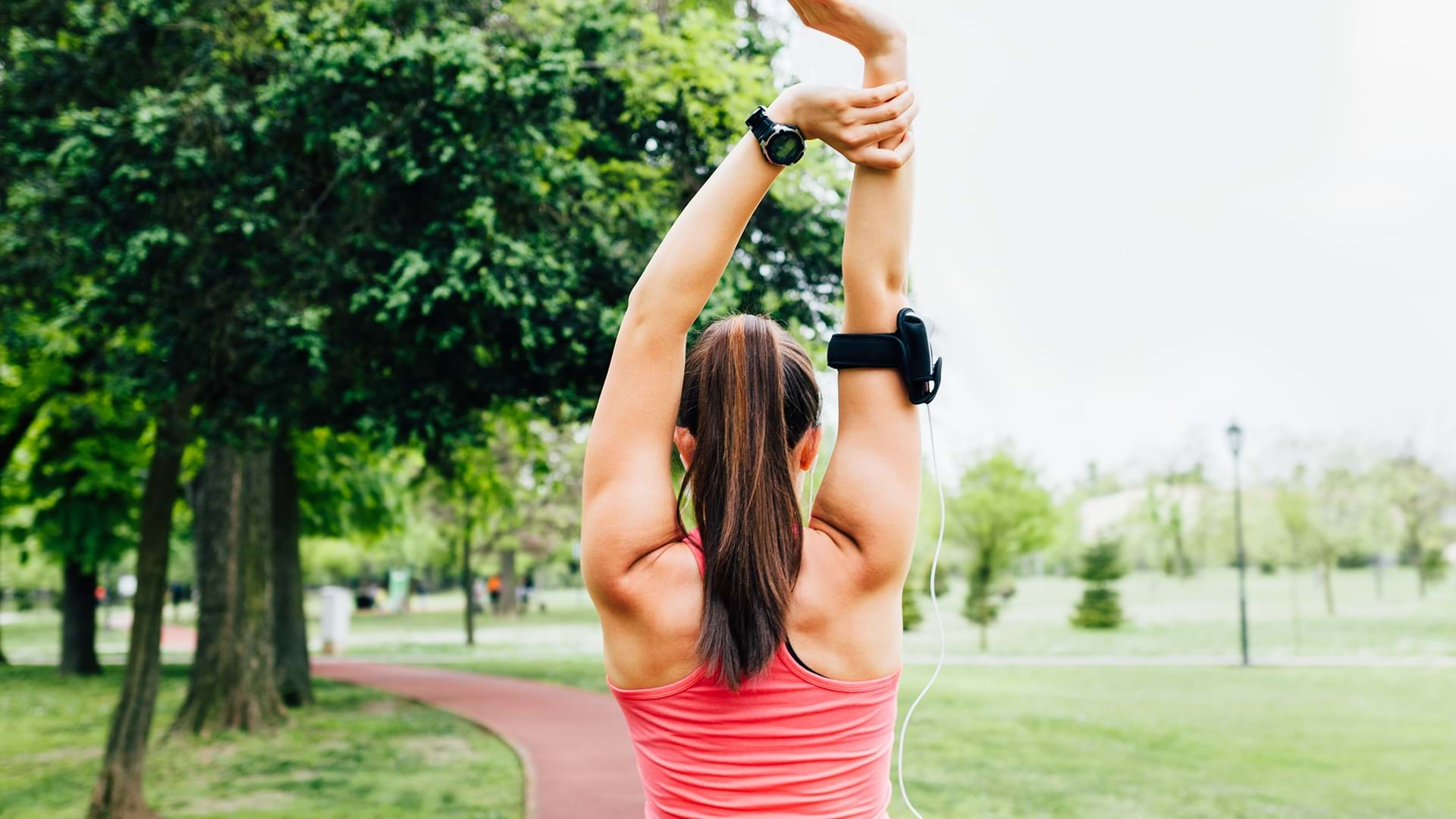
Tricep stretch
Bending both arms behind your head, grab one elbow and gently stretch your arm over. Hold before switching sides. Be sure to keep your shoulders down and relaxed to get the full benefit of this stretch.
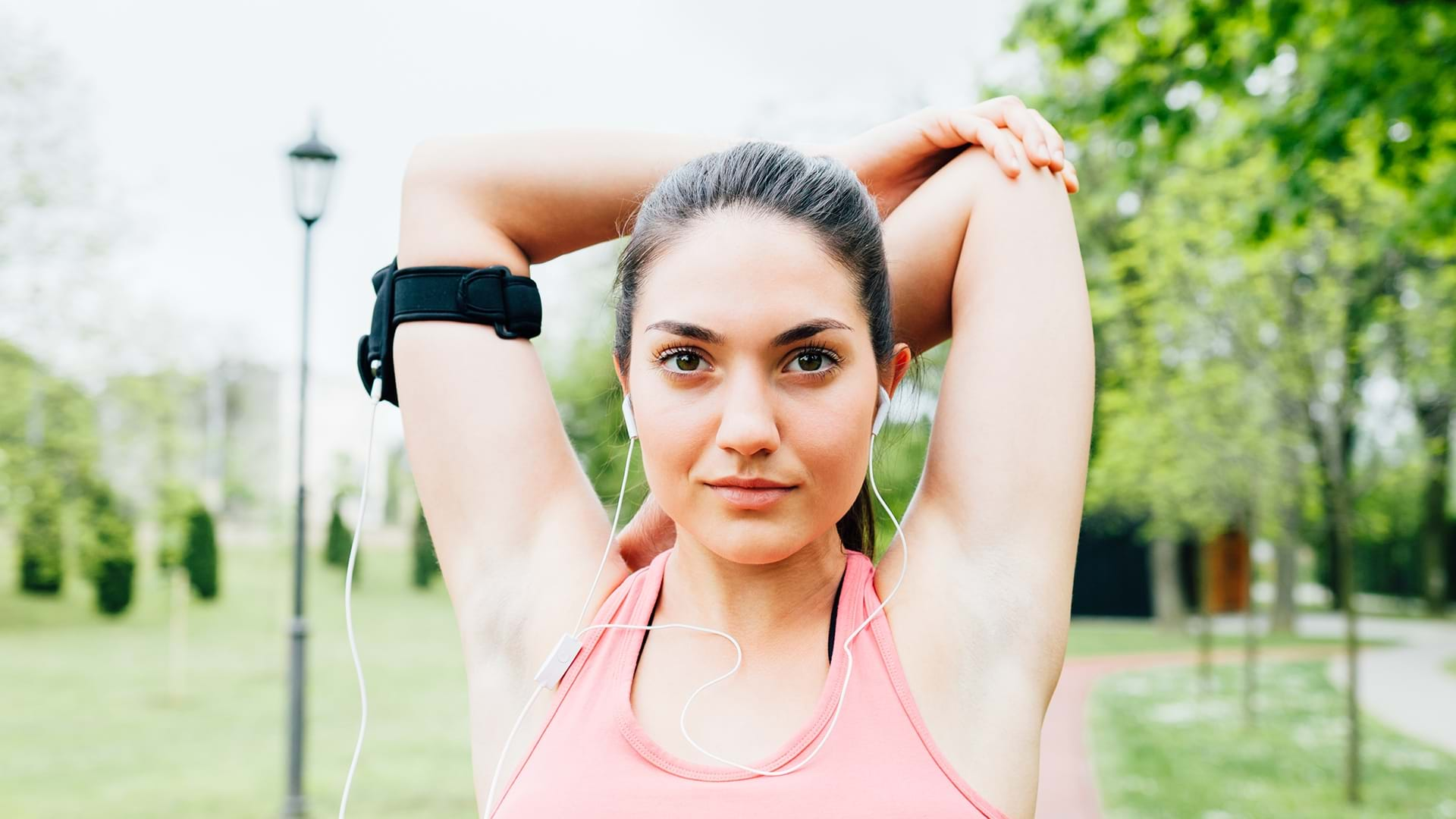
Overall, it’s a good rule of thumb that dynamic stretches should be alternated for a minute or so, for as many rounds as feels good for your body. With static stretches, hold for at least 15-30 seconds to really lengthen those muscles.
